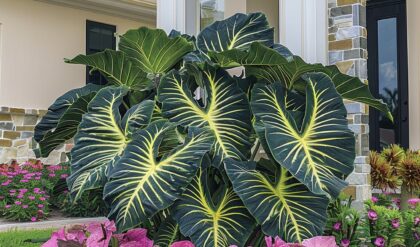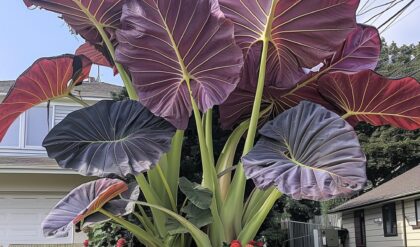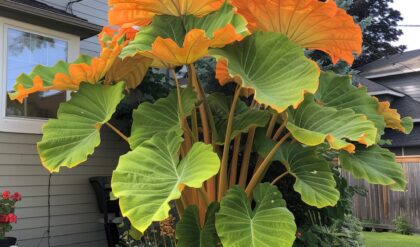Gardening is a rewarding and fulfilling hobby that not only provides fresh produce but also helps to reduce stress and improve mental well-being. However, for those who are new to gardening, the idea of starting a garden can seem daunting. There are many factors to consider, such as location, soil quality, plant choices, and maintenance. But fear not, with proper planning and preparation, anyone can have a successful garden. In this article, we will discuss how to start a garden from scratch and provide valuable tips to help you along the way.

Planning: Choosing the Right Location and Plants
The first step in starting a garden is choosing the right location. Most plants require at least six hours of sunlight per day, so it’s important to find a spot in your yard that gets plenty of sun. If you have limited space or live in an apartment, you can still have a garden by opting for container gardening or using a sunny balcony.
When deciding what to plant in your garden, it’s essential to consider what your family consumes regularly. There’s no point in growing vegetables that no one enjoys eating. It’s also a good idea to research which plants grow well in your climate and season. For example, warm-weather vegetables like tomatoes, peppers, and cucumbers should be planted after the last frost date, while cool-weather crops like lettuce and carrots can be planted earlier in the season.
You can also start some seeds indoors for warm-weather vegetables to give them a head start before transplanting them outside. This is especially useful if you live in an area with a short growing season. Just make sure to follow the instructions on the seed packets for planting depth and spacing to ensure proper growth.
Another factor to consider is whether you want a traditional garden or raised beds. Traditional gardens are built directly on the ground, while raised beds are built above the ground, providing better drainage and preventing soil compaction. Raised beds are great for those with limited space or poor soil quality and can be made from various materials such as wood, concrete blocks, or even straw bales.
Once you have chosen the location and plants for your garden, it’s time to prepare the soil.

Preparing the Soil
The key to a successful garden is healthy soil. Before planting anything, you need to assess your soil quality and make any necessary amendments. The best way to do this is by conducting a soil test, which will provide information on the nutrients present in the soil and its pH level.
If your soil is lacking in nutrients, you can add compost, manure, or a mixture of sand, peat moss, and compost to improve its quality. Compost is an excellent natural fertilizer that provides essential nutrients to your plants while also improving soil structure and water retention. You can either purchase compost or make your own using kitchen scraps, grass clippings, and other organic materials.
Adding mulch to your garden can also help retain moisture, suppress weeds, and improve soil health. Wood chips are a popular choice for mulch and can be purchased or obtained for free from tree trimming companies. Spread a layer of mulch around your plants, making sure not to cover the base of the plants, as this can lead to rotting and disease.
Planting: Proper Techniques and Care
When it’s time to plant your seeds or seedlings, it’s important to follow the instructions on the seed packets carefully. Each plant has different requirements for planting depth and spacing to ensure proper growth and yield. It’s also essential to consider which crops should be planted next to each other, as some plants can benefit from being grown together while others may hinder each other’s growth.
For example, tall crops like corn should be planted on the north side of the garden to avoid shading smaller plants. You can also use a trellis or stakes to provide support for climbing plants like tomatoes and beans.
Regular maintenance is crucial for a healthy and productive garden. Weeding is essential as it prevents unwanted plants from competing with your crops for nutrients and water. You can use a hoe or your hands to remove weeds, making sure to get rid of the roots as well.
Watering consistently is also important to prevent your plants from wilting and to promote healthy growth. A fan sprinkler is an efficient way to water your garden as it covers a large area at once. It’s best to water in the morning or evening when the sun is not as intense to reduce water loss due to evaporation.
It’s also a good idea to plan for preservation methods to avoid food waste. If you have an excess of produce, consider freezing, canning, or dehydrating them for later use. Staggering planting throughout the season can also provide a continuous supply of fresh produce, rather than having a large amount all at once.
Preparing for Next Year
As the gardening season comes to an end, it’s essential to prepare your garden for next year. Covering the ground with winter cover crops or mulch can help improve soil health and prevent erosion. Winter cover crops are plants that are grown during the off-season to protect the soil from harsh weather conditions and add nutrients to the soil. Some popular cover crops include legumes, rye, and clover.
Leaving plant stalks and fallen leaves in your garden over the winter can also benefit your soil. The decomposition process will add organic matter to the soil, improving its quality for the next growing season.
Resources for Gardening Success
Starting a garden can be an overwhelming task, especially for beginners. Thankfully, there are many resources available to help you along the way. My Gardener is a great website that provides helpful information and tips for gardening, as well as a wide selection of seeds for purchase.
In addition, you can find links to other gardening videos in the video description for this article. These videos cover various topics, from choosing the right plants to building raised beds and preserving your harvest. You can also share your own helpful comments and gardening tips with the community, creating an online support system for fellow gardeners.
Conclusion
Starting a garden is a fun and rewarding experience that anyone can do. With proper planning, soil preparation, and care, you can have a successful garden that provides fresh produce and improves your overall well-being. Remember to choose a sunny location, plant crops your family enjoys, and improve soil health with compost, mulch, and cover crops. Regular maintenance, such as weeding and watering, is vital to keep your garden thriving. And don’t forget to plan for preservation methods to avoid food waste and stagger planting for a continuous supply. With these tips and resources, you’ll be on your way to becoming a successful gardener in no time. Happy gardening!





